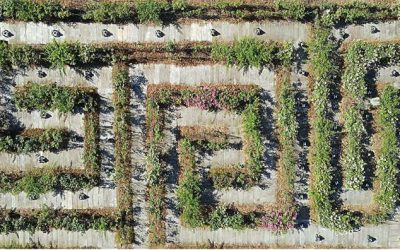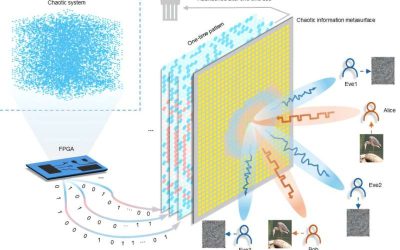Two-dimensional (2D) semiconductors, materials that can conduct electricity and are only a few atoms thick, are promising alternatives to the conventional silicon-based semiconductors currently used to fabricate many electronics. Despite their promise, these materials...
TECHXPLORE
Freestanding hafnium zirconium oxide membranes can enable advanced 2D transistors
To further reduce the size of electronic devices, while also improving their performance and energy efficiency, electronics engineers have been trying to identify alternative materials that outperform silicon and other conventional semiconductors. Two-dimensional (2D)...
A human-inspired pathfinding approach to improve robot navigation
For robots to be successfully introduced in a wider range of real-world settings, they should be able to safely and reliably navigate rapidly changing environments. While roboticists and computer scientists have introduced a wide range of computational techniques for...
New memristor-based system could boost processing of radiofrequency signals
The development of more advanced technologies to process radiofrequency signals could further advance wireless communication, allowing devices connected to the internet to share information with each other faster and while consuming less energy. Currently, radio...
New reconfigurable memristor-based system enables in-memory data sorting
Organizing data in a specific order, also known as sorting, is a central computing operation performed by a wide range of systems. Conventional hardware systems rely on separate components to store and sort data, which limits their speed and energy efficiency.
New scrubbing robot could contribute to automation of household chores
While the advent of robotic systems that can complete household chores has been widely anticipated, those commercially released so far are primarily robot vacuums that autonomously clean the floor. In contrast, robots that can reliably clean surfaces, tidy up, cook or...
Conversations between LLMs could automate the creation of exploits, study shows
As computers and software become increasingly sophisticated, hackers need to rapidly adapt to the latest developments and devise new strategies to plan and execute cyberattacks. One common strategy to maliciously infiltrate computer systems is known as software...
New approach allows drone swarms to autonomously navigate complex environments at high speed
Unmanned aerial vehicles (UAVs), commonly known as drones, are now widely used worldwide to tackle various real-world tasks, including filming videos for various purposes, monitoring crops or other environments from above, assessing disaster zones, and conducting...
Dexterous robotic hand integrates thermal, inertial and force sensors
While roboticists have introduced increasingly advanced systems over the past decades, most existing robots are not yet able to manipulate objects with the same dexterity and sensing ability as humans. This, in turn, adversely impacts their performance in various...
A chaos-modulated metasurface for physical-layer secure communications
With so many people using devices that can be connected to the internet, reliably securing wireless communications and protecting the data they are exchanging is of growing importance. While computer scientists have devised increasingly advanced security measures over...










